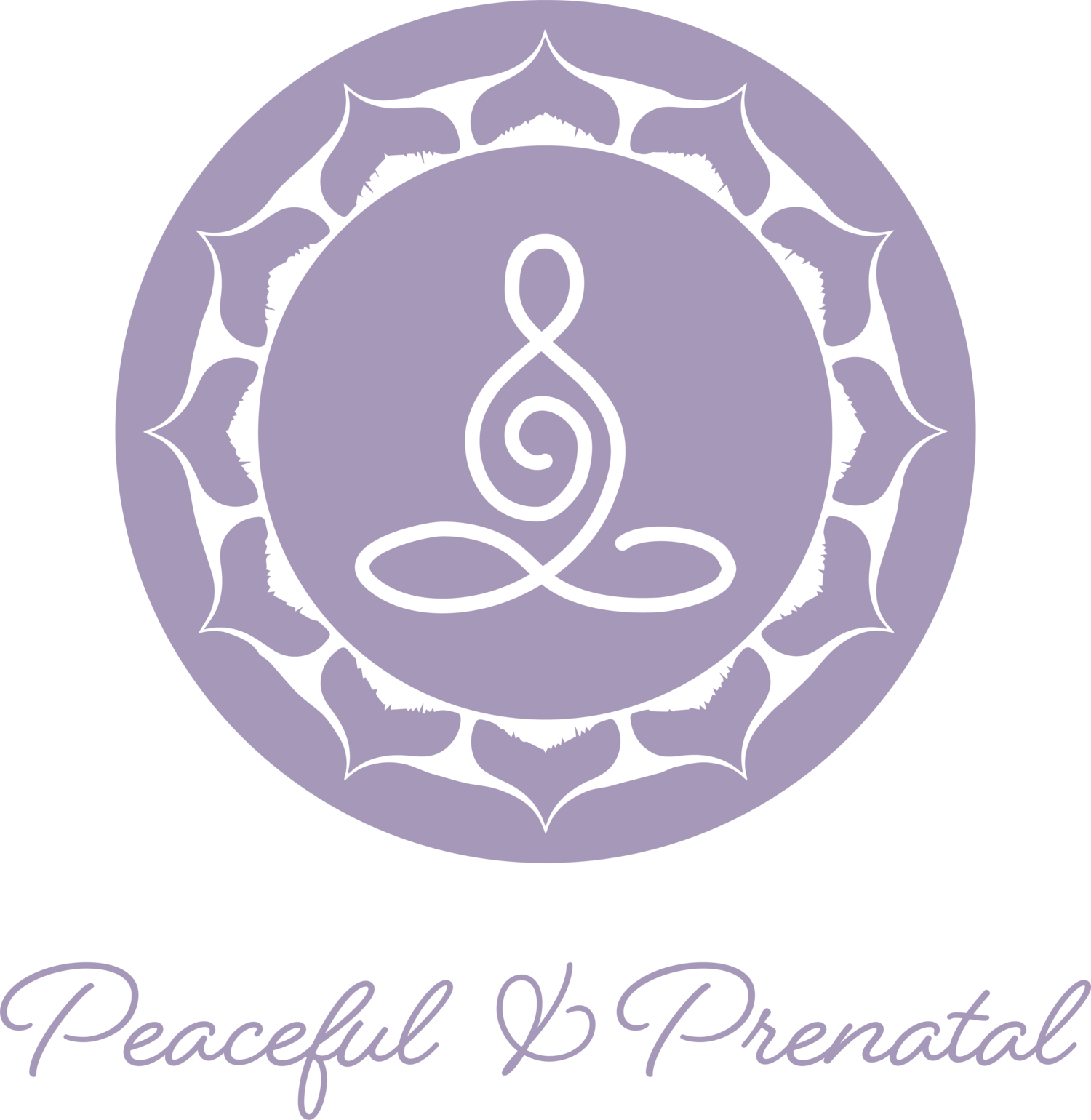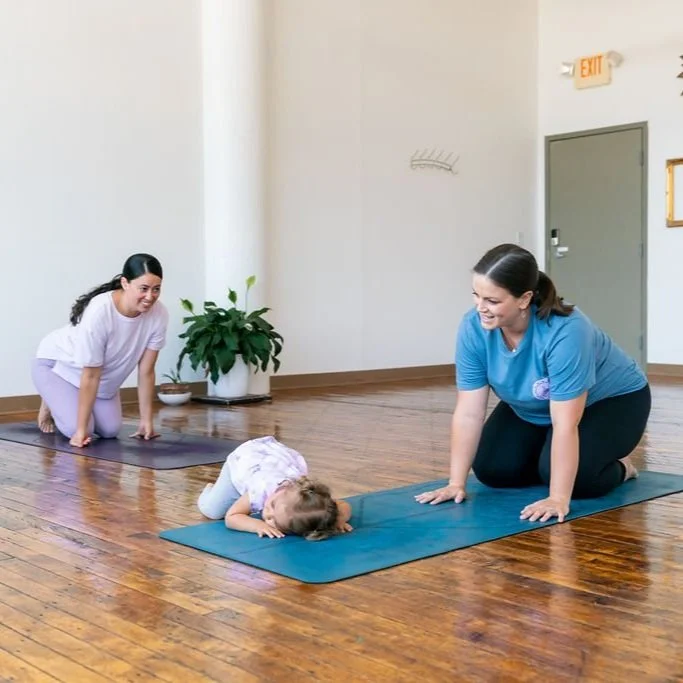Teaching Self-Regulation To Toddlers
Self-regulation is one of the most important life skills we can nurture in our young children, yet it’s not something that comes naturally. It’s something that is taught, modeled, and practiced over time. In our baby and toddler yoga classes, we create safe, connected spaces where little ones can begin this journey of emotional awareness and nervous system regulation with support and joy.
But what exactly is self-regulation, and how can we support our little yogis from 1-3 years old in building these foundational skills? Let’s explore what this looks like in daily life, and on the yoga mat.
What is self-regulation?
Self-regulation is a child’s ability to manage their emotions, behavior, and energy levels in response to their environment.
For a toddler, this might look like:
Calming themselves after getting upset
Waiting for a turn (even for 10 seconds!)
Expressing frustration without hitting or screaming you
Shifting from active play to quiet time without a full loss of control
Of course, at ages 1 to 3, toddlers are just beginning to develop these abilities. Their brains are still under construction, especially the parts responsible for impulse control and emotional regulation. That’s why self-regulation at this stage is co-regulation. Young children need a calm, loving adult to help them feel safe and guide them through big feelings.
Through repeated experiences of being soothed, seen, and supported, toddlers learn how to internalize these strategies for themselves. It’s not about teaching them to "calm down" on command, it’s about building up their internal capacity, step by step.
Name and validate feelings
If you’ve ever been tempted to distract your toddler with a toy or a snack when they’re upset, you’re not alone. It’s a natural instinct to want to make the crying stop. But the magic of self-regulation happens through the emotion, not around it.
When we pause to name and validate what our child is experiencing, we help them make sense of their inner world.
For example:
“You’re feeling mad because we had to leave the playground. That’s really hard.”
“You wanted the red cup, not the blue one. You’re sad and frustrated.”
“You’re scared because that dog barked so loudly. That surprised you!”
This kind of language builds emotional literacy and lets children know their feelings are safe to feel. Over time, they begin to associate words with their internal sensations, which gives them tools to express themselves rather than act out.
In our toddler yoga classes, we often use songs, facial expressions, and story-based movement to mirror and name common feelings. We might roar like a lion when we’re angry, curl into a ball when we feel scared, or stretch open when we’re joyful. This playful approach builds emotional vocabulary in a way that’s embodied and accessible for young learners.
The nervous system + learning through play
Self-regulation isn’t just a cognitive skill, it’s a physiological one. When toddlers are overstimulated, overtired, or overwhelmed, their nervous systems are in a state of dysregulation. They may cry, scream, run, hit, collapse - or all of the above!
The goal isn’t to eliminate these moments (they’re developmentally appropriate!) but to gently support the nervous system in returning to a state of calm.
Play is one of the most powerful tools we have for this.
When toddlers engage in:
Predictable routines
Sensory activities like water play, finger painting, or sand play
Movement that includes jumping, rocking, spinning, or swinging
Music and rhythm games
They are actively regulating their bodies. These activities provide the input their nervous systems crave, which helps them feel centered and safe.
In yoga, we layer in these same regulatory patterns through guided movement and music. We might roll on the floor, rock on hands and knees, sway side to side in “tree” pose, or jump like frogs. These playful motions aren’t just cute—they’re deeply calming to the sensory system.
How Baby and Toddler Yoga Supports Self-Regulation
Our classes are intentionally designed to support co-regulation between caregiver and child, while gently introducing tools that toddlers can carry with them over time.
1. Routine and Rhythm
Each class follows a predictable structure: we start with a song, warm up our bodies, play through yoga poses in a story or journey, pause for rest or breath, and close with bubbles and song. This rhythm provides a sense of safety and flow that toddlers can relax into.
2. Breath Awareness
We don’t expect a 2-year-old to take deep belly breaths on command, but we introduce breath in fun and meaningful ways. We blow bubbles, hum like bees, or pretend to blow out birthday candles. These games build body-breath connection, a key piece of regulation.
3. Sensory Integration
Many of our poses stimulate the vestibular (balance), proprioceptive (body awareness), and tactile systems. Crawling under bridges, spinning in circles, balancing on one foot—all of these help organize the nervous system and support emotional resilience.
4. Naming Feelings Through Story and Movement
Each yoga class often has a theme that resonates with a toddler’s inner world, like “feelings and faces,” “transportation,” or “jungle animals.” Through story, song, and movement, we give toddlers a way to explore their emotions safely and playfully.
5. Modeling Regulation
Perhaps most importantly, toddlers look to the adults around them to understand how to respond to stress. When caregivers participate in class: breathing, slowing down, connecting, they’re showing their children what regulation looks and feels like.
The work of supporting toddlers through emotional highs and lows can feel repetitive and thankless, but it’s life-changing.
Each time you pause to name their feeling, offer a calm touch, create a soothing rhythm, or move through breath and play, you’re wiring their brain and nervous system for resilience. You’re laying the foundation for a child who can self-soothe, express themselves, connect with others, and move through life with greater ease.
In our baby and toddler yoga classes, we honor the sacred mess of this stage. We don’t expect perfect poses or stillness—we celebrate wiggles, big feelings, and the beautiful process of becoming. Together, with love, movement, and mindfulness, we’re helping little ones build the tools they’ll use for a lifetime.





